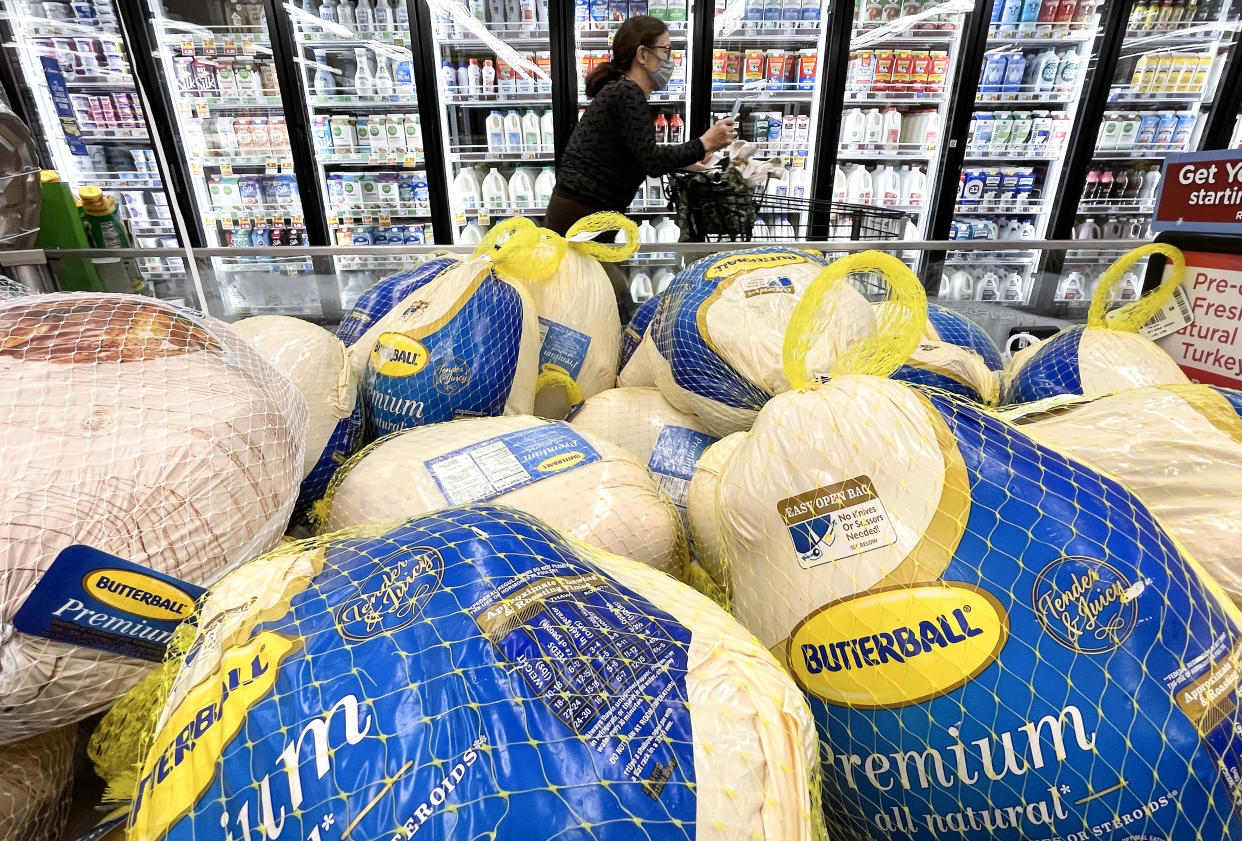Thanksgiving dinner essentials like turkey, cranberries and potatoes are more expensive than ever, leaving many Americans to wonder if it'd be cheaper to dine out.
A new report from Wells Fargo is out to help Americans understand which option may be right for them and ways to save. Some key factors to consider include the party size, how important it is to have a turkey at the table, and if you're open to dining out in general, said Brad Rubin, Wells Fargo Food and Agribusiness Sector Manager of Specialty Crops.
"For that smaller family [of four] going out this year, which may be considered sort of a luxury for most, might actually have a lot of value there. Obviously, if you have a much larger family, economies of scale are at play, making the meal was probably going to be more economical in that particular instance," he told Yahoo Finance.
In November 2021, the cost to dine out increased at a slower rate, up 5.79%, compared to the price of groceries, up 9.81%. This year the overall cost of a Thanksgiving basket costs 14.9% more than November 2021, per data pulled by Wells Fargo from the Bureau of Labor Statistics. That's compared to the cost of dining out at some sort of restaurant for a Thanksgiving meal, up 5.8% in August from November 2021.
Beginning with the "star" of Thanksgiving — the turkey — customers can expect it to cost 23% more than last year, according to recent report from the USDA Economic Research Service. Per a pound, customers can likely expect to spend $1.64 per pound for a frozen whole-hen that that ranges from 8 to 16 pounds.
Frozen turkeys tend be less expensive than fresh turkeys though. Rubin says "buying frozen turkeys now might be a little bit of a more economical option" but if you're open to the idea he encourages families to "maybe looking at alternative proteins, if you still want to eat at home."
Some of the most economical options — chicken and pork. "If you're looking for protein alternatives, definitely, chicken and pork products are going to be maybe a little bit less expensive than some of the other other proteins out there," he emphasized.
The price of chicken is up 17.2% year-over-year, while pork is up 6.7%, according to the Bureau of Labor Statistics September's Consumer Price Index.
Overall items driving the cost of Americans' Thanksgiving dinners higher include eggs (+32.5%), butter (+25.8%), and flour (+17.1%). Fruits and vegetables have seen a lower jump in prices, only up 7.3%, but consumers can expect higher prices for two items some may call Thanksgiving essentials — cranberries and sweet potatoes.
Rubins says canned or frozen may be the way to go to spend less. "It's always going to be a cheaper option to buy frozen vegetables or canned products, therefore, it's going to be more economical to go that route versus buying new fresh vegetable products, [with] fresh cranberries as an example."
Meanwhile, traditional mashed potatoes may need to be swapped for sweet mashed potatoes. This year's regular potato crop is expected to be smaller than last year, with the report noting "with input costs rising, yield down, and production affected, you can bet consumers will start to see an increase in the price of potatoes."
"It may make sense to incorporate sweet potato a little bit more than other vegetables into this Thanksgiving meal, there's a surplus of the crop, inventories are high, and therefore I think people are gonna get better deals in the supermarkets because of that," Rubin suggested.
Is this the year to dine out? Why restaurants may have more value this year
Rising commodity costs are taking a direct hit on grocery store prices causing lots of Americans sticker shock. For this reason, Rubin says, "It makes economic sense potentially for that smaller family [of four] to go ahead and have that eating out experience."
"If you're a smaller family … consider a restaurant to skip that prep and cleanup, which is can be a somewhat of a hassle … It's really going to be considered a stronger value this year, by potentially eating out instead of at home."
While restaurants have raised menu prices, they are less impacted due to ingredients making up a small percentage of restaurants overhead. "They have economies of scale, they buy in bulk, they can spread out their costs across the labor pool to make more food at a lesser cost."
Rubin does forecast that as consumer confidence increases, prices will adjust. "And that is something to be grateful for."
Brooke DiPalma is a reporter for Yahoo Finance. Follow her on Twitter at @BrookeDiPalma or email her at [email protected].
Follow Yahoo Finance on Twitter, Instagram, YouTube, Facebook, Flipboard, and LinkedIn.
Source: Read Full Article



